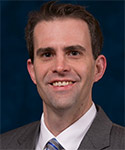Despite declining religious affiliation, religious giving continues to hold steady, even among members of the millennial generation, according to “Giving to Religion,” a special report from Giving USA Foundation.
Researched and written by the Lake Institute on Faith & Giving at the Indiana University Lilly Family School of Philanthropy at IUPUI, the report notes a number of key findings, including:
- People who are religiously affiliated are more likely to make charitable donations.
- Although the percentage of people who give to religious congregations is declining, those who give to religion are giving at steady rates.
- Contrary to popular belief, younger generations do give to religion, and those who give are doing so at a similar rate as earlier generations did at the same point in their lives.
This should encourage Christian leaders to engage people about giving, not just to the church itself but also more broadly, said David P. King, the Karen Lake Buttrey Director of the institute.
 “Don’t shy away from teaching and talking about these questions. Faith is an important factor in people’s giving. Questions of vocation, work, justice, the economy -- all these questions are ripe for exploration,” he said. “Those entrusted to our care as religious leaders are hungry for conversations about these topics.”
“Don’t shy away from teaching and talking about these questions. Faith is an important factor in people’s giving. Questions of vocation, work, justice, the economy -- all these questions are ripe for exploration,” he said. “Those entrusted to our care as religious leaders are hungry for conversations about these topics.”
King spoke to Faith & Leadership about the report, as well as the launch of a new study on how congregations and other organizations actually manage and spend the money they receive. The following is an edited transcript.
Q: From your perspective, what do you think are the most important takeaways of your report?
I think it does substantiate what the research on religious giving and philanthropy have shown for a long time, which is that religious giving is a significant leading indicator of the motivations for why people give.
Despite the rising levels of disaffiliation and declining levels of attendance, religious giving continues to be strong. And the fact that that continues to be the case despite these other factors that we’ve demonstrated is a significant finding.
Q: So giving is staying the same, but religiosity is declining. Why?
We don’t know for sure, but a hunch we have is that we think the rise in un-affiliation are those who were sort of on the edges of our religious communities before. So as culture has changed over the last few decades, it’s much more feasible for someone who said they were affiliated as a Presbyterian or as a Protestant but may have gone to services once or twice a year -- it now feels more honest saying they’re “nothing.”
What we know about the way religious giving works is that the more connected someone is with the faith community -- oftentimes, we measure that through worship attendance, but we can look at it through service, volunteering, spiritual formation, small groups -- they are going to be more inclined to engage with that community and give.
Q: So the big givers are that core that’s still affiliated?
Right. So in the short term, we’re not seeing a drastic difference. The question’s going to be what happens in a couple of decades, as particularly the younger generations -- millennials and to an extent Xers -- are disaffiliating in higher percentages.
I think that could have a drastic effect on giving.
Q: Talk a little bit about your findings regarding generational giving patterns.
So we know that a greater percentage of the “greatest” and “silent” generations continue to give to religion than other generations.
Boomers, however, give the largest annual amounts to charity and to religious giving, because they’re in that period of life where they are oftentimes either working or newly retired and have the most resources to give.
Through other studies, what we are finding particularly about those younger generations, the X and millennial generations, is that on average, they don’t give as much across the board, and they don’t give as much to religious giving in particular.
While there may be fewer of them giving and therefore fewer donors, those who do give, even among those millennials, are giving at significant levels.
Q: Are there other influences on the generations?
I think not only socioeconomic but cultural factors are having a major impact on how this new generation might give, and how they are conditioned and cultivated to be givers.
Part of it is the formal way that we define giving. I would suggest that religious leaders or religious institutions need to expand their imaginations and how we talk about giving.
For many millennials, it means informal giving -- helping a friend with a Kickstarter campaign, loaning them some funds, letting someone sleep on their couch -- as much as it is making a tax-deductible donation to a religious institution or charity.
Q: So what are the lessons for Christian leaders? How does the information in this report translate into action for folks who are in positions of leadership?
One of the most dramatic takeaways is that religious affiliation matters. So whether it’s Protestant, Catholic or Jew, those with a religious affiliation give more than twice as much as an individual without any religious affiliation.
Despite the trends and the headlines of decline and change, it’s really important for religious leaders, Christian leaders, to recognize how important faith is as a motivator for people’s giving.
Think of that as a strength and an asset -- to really engage those individuals entrusted to your care in conversations about giving.
We also know that religious intensity is the second-best measure for how people might give. We oftentimes look at attendance. We know attendance patterns are continuing to change.
What are the other ways we can imagine engaging with individuals around their faith lives -- inside or outside our religious institutions -- as touch points for how they can engage in community?
Don’t shy away from teaching and talking about these questions. Faith is an important factor in people’s giving. Questions of vocation, work, justice, the economy -- all these questions are ripe for exploration. Those entrusted to our care as religious leaders are hungry for conversations about these topics.
While they may not want to hear another stewardship sermon, they do want to engage with you on what it means to live a just life and what the meaning of their life and work might be.
Take those assets and start conversations around them.
Q: So not just asking people to donate to the church but engaging them in a broader conversation?
Exactly. We are operating on a fairly narrow definition of religious giving -- basically, to congregations, denominations, missionary societies and religious media.
But there is a dramatic number of faith-based nonprofits or even secular nonprofits that people give to because of their faith that are outside the realm of this narrow definition of religious giving. And in fact, that continues to grow.
When we ask individuals to think about how their faith motivates their giving, a majority of Americans will say that their religious commitments are one of the key motivators for their giving.
Individuals may not be giving in the same ways to their religious congregations, but that doesn’t mean they’re not engaged out of their faith to give and volunteer more widely.
And we think conversations about these topics will be conversations that actually cultivate generosity and giving for individuals broadly. And for the most part, that’s going to be a rising tide.
The other thing I would say is that people are more strategic with their giving. They want to see impact and change. Congregations in particular have trailed far behind other nonprofits in demonstrating why they’re the best recipient of a gift.
They lack transparency, accountability and demonstrated success, impact and outcomes. Congregations in particular, but religious institutions in general, can learn a lot from other nonprofits in how to tell their story.
We talk a lot at Lake Institute when we work with religious leaders about this sense of general trust the congregations have operated out of. It’s assumed that they’re at the center of civic life in the community and that they’re a trusted resource not only for the care of the resources they’ve been given but also in the use of those resources in the community and more broadly.
Now we see most individuals operating much more out of a sense that that strategic trust has to be earned and demonstrated. Congregations are beginning to clearly see that they have to make that case.
It doesn’t mean you have to shift your mission. It’s clarifying what makes your organization unique and what kind of impact and outcome you’re having. It really centers on being clear about your values and how you tell your story.
So often, we don’t tell those stories that are right in front of us, because we assume that everybody knows them.
Q: We’ve talked about this report, which looks at individuals and giving. But you are launching a study to look at the other side -- what do the religious institutions do with the resources they receive? Explain a little bit about the new study.
It’s hard to get good information on giving from congregations, in particular because, unlike other nonprofits, most congregations are not filing 990 forms with the IRS.
So we’re working with the Association of Statisticians of American Religious Bodies (ASARB) to collect the data from within denominations for that purpose.
What we’re really interested in in this study is actually getting for the first time in a number of years a really important, reliable foundation of what’s happening with congregational finances.
And beyond simply how much congregations receive, which is really important data for us in thinking about how individuals give (the bulk of it is congregational), but also how congregations manage and then spend those resources.
Q: So that ties back to what you were saying about making the argument and telling the story for impact.
Yes. We don’t know much about how congregations create their budgets and what part of the leadership is involved in those conversations.
One thing that we find a lot is the religious leaders have taboos around money and their own understanding -- how they preach and teach about it.
They also don’t know much about the inner workings of the finances of their institutions. This is in contrast to what an executive director of any nonprofit would know. They would know their donors; they would know if their budget was in the red or the black. Oftentimes, we outsource that information within a congregation to a small finance committee.
We have questions about what is happening within congregations -- not simply how they manage their finances, that transparency and accountability, but also how they talk about it.
What type of teaching and training are congregations doing with their members? If a congregation offers financial literacy courses and talks about how much is enough -- addresses questions of consumerism with youth and children and adults and Christian education classes -- does that make a difference in their giving and how they manage their resources?
And then also, where do those resources go? How much do they then give to the denominations? We know that story’s changing. How much of that goes to global missions and service around the world?
From a number of studies, like the National Congregations Study (NCS) and others, we know about how congregations are important players within the local economy or local community.
So for us, it’s not simply how much money comes in to congregations but how they receive, manage and then spend or send those resources around the world.
Q: When are the findings expected to be available for this study that you’re starting?
This national survey will begin in early 2018, so we would hope to have initial findings by the fall of ’18.
We’ll follow up with a number of the congregations with further interviews and even observations, spending time in those congregations, interviewing laypeople and clergy, observing services.
Because an important point for us is not simply getting at the number of how much money comes in and goes out of congregations, but it’s those deep, theological, cultural, contextual conversations.
And that’s really something that Lake feels strongly about -- that there are theologies of money and how we preach, teach and talk about it that are essential to how we receive, manage and spend those resources.
So what are those theological or cultural orientations around money that are oftentimes shaped within our congregations?
We’d really like to raise awareness of how these economic issues are an important aspect of considering the future of American religious life, and particularly American religious institutions, as far as what those institutions will look like -- past, present, future -- and even how that actually impacts the practice of religious leaders and those that are entrusted to their care.







